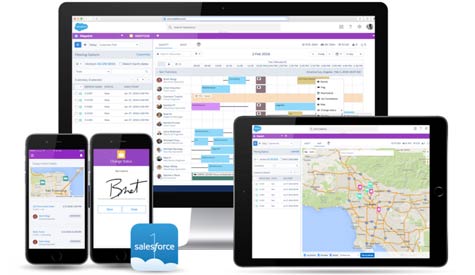As field service organizations become an increasingly critical element of the customer experience, many organizations are looking to tightly integrate their field service applications with their customer relationship management (CRM) applications. To make that easier to accomplish, Salesforce today unfurled Field Service Lightning, a suite of field service applications that makes use of the same customer records as its CRM and contact center applications.
Bobby Amezaga, senior director of product marketing for the Service Cloud at Salesforce, says Salesforce is expanding its reach into field service at a time when organizations of all sizes are trying to create a more unified customer experience spanning everything from marketing to customer support. As part of that effort, Amezaga notes, many field service organizations are now also being used to sell additional products and services at the same time support for an existing product or service is being delivered.
In general, Amezaga says, the days of the disconnected field service organization are coming to a close. Rather than relying on a silo of client/server applications running on premise, a cloud application makes it much simpler to employ mobile computing devices that provide access to the entire customer record. Because of that approach both the field service and sales teams are always aware of the latest interaction with any particular customer, says Amezaga.
Of course, IT organizations can always opt to integrate any number of individual field service applications with any backend system they want. But, Amezaga notes, those integration efforts are often cost prohibitive for most organizations. In addition, every time there is an update to the field service application, the entire backend IT environment usually has to be updated as well.
Clearly, cloud computing presents an opportunity to transform a field service operation that is by definition going to be dependent on some form of mobile computing device. The only real question now is how best to go about achieving that goal.




